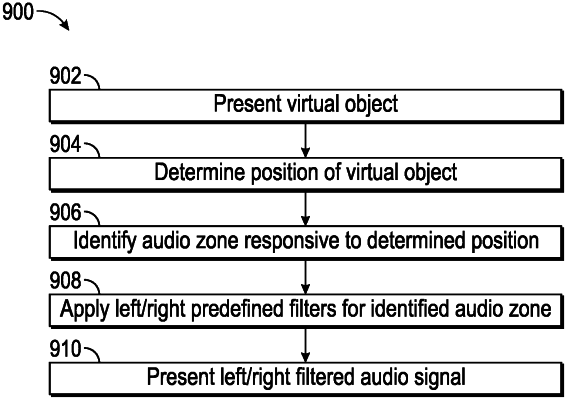| CPC H04S 7/304 (2013.01) [G02B 27/0172 (2013.01); H04R 3/04 (2013.01); H04R 5/033 (2013.01); H04R 5/04 (2013.01); H04S 1/007 (2013.01); H04S 7/307 (2013.01); G02B 2027/0134 (2013.01); G02B 2027/0138 (2013.01); H04S 2420/01 (2013.01)] | 20 Claims |

|
1. A system for presenting audio signals to a user, the system comprising:
a speaker system including a speaker for presenting an audio signal at a location adjacent the user and another speaker for presenting another audio signal at another location adjacent the user; and
a processor coupled to the speaker system, the processor configured to determine a current position of a virtual object with respect to the user, the virtual object having an associated audio track, identify a current audio zone from a plurality of audio zones responsive to the determined current position, each of the plurality of audio zones having a corresponding predefined filter and another corresponding predefined filter, and apply the predefined filters corresponding to the current audio zone to the audio track associated with the virtual object to produce the audio signal for presentation by the speaker and the other audio signal for presentation by the other speaker, wherein each of the predefined filters for each of the plurality of audio zones is a corresponding set of digital biquadratic filters and at least one of the corresponding sets of digital biquadratic filters represents between 24 and 42 multiply-and-accumulate operations.
|